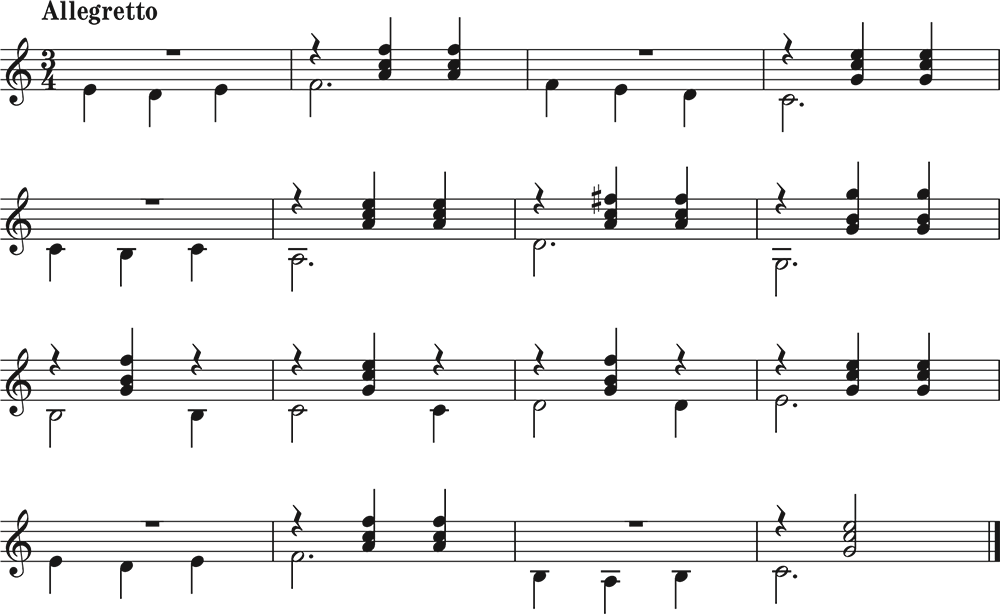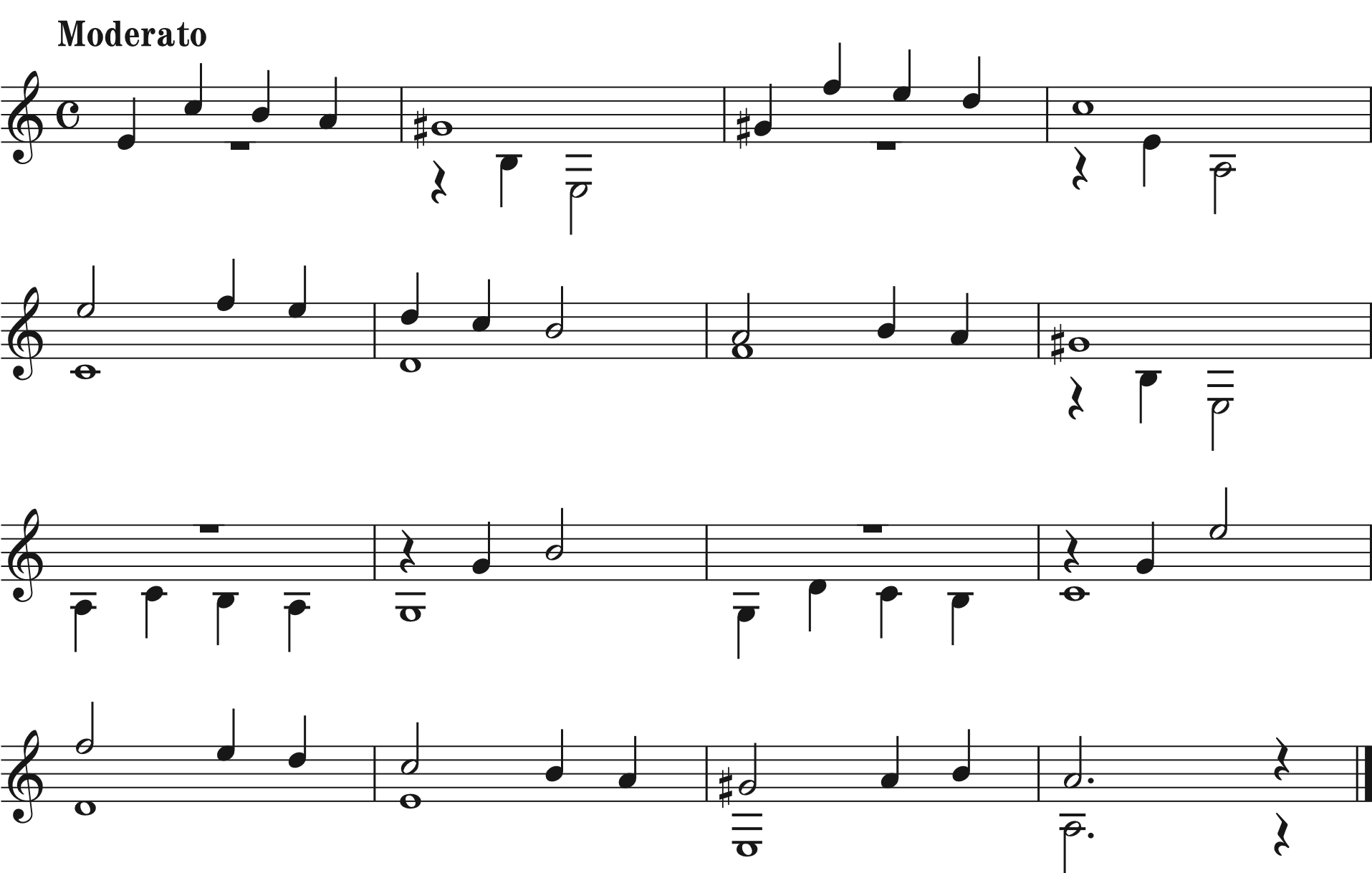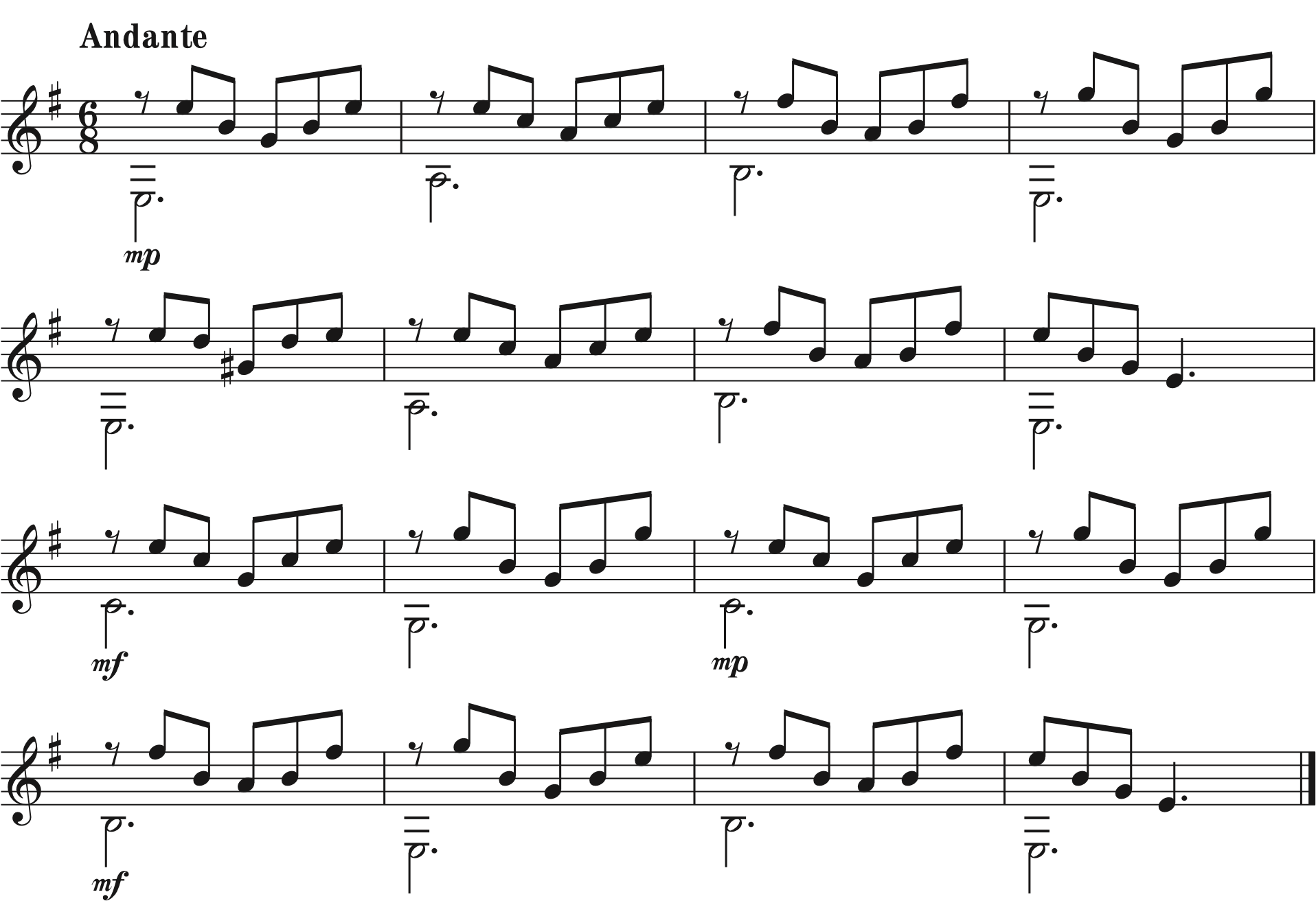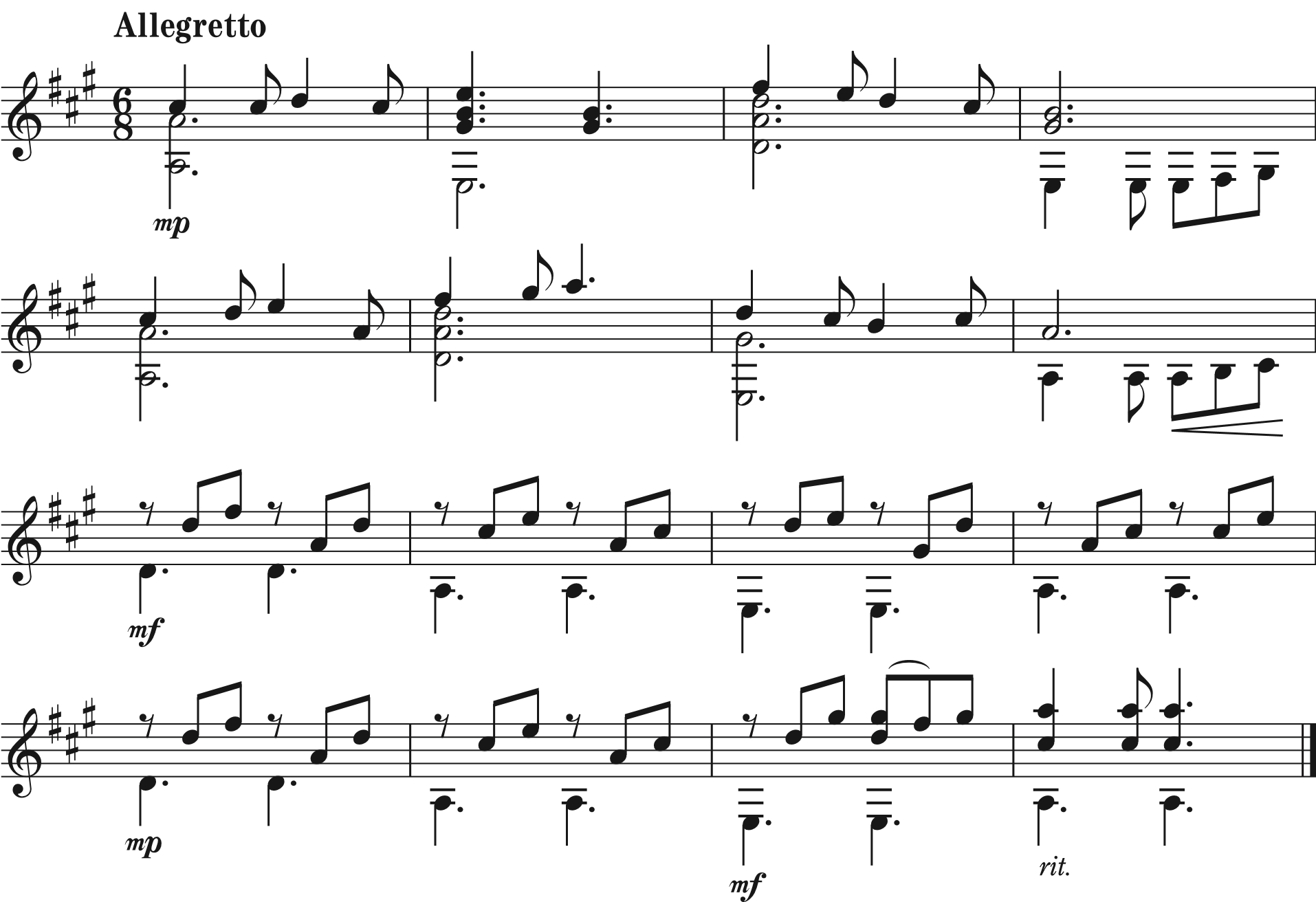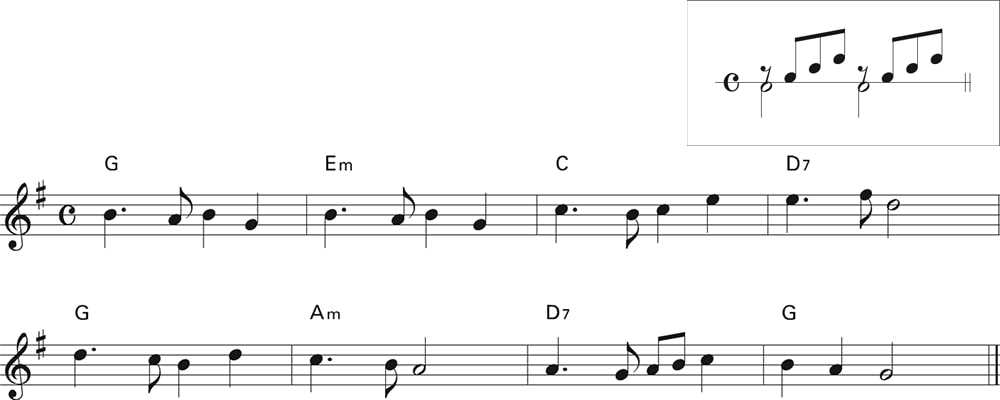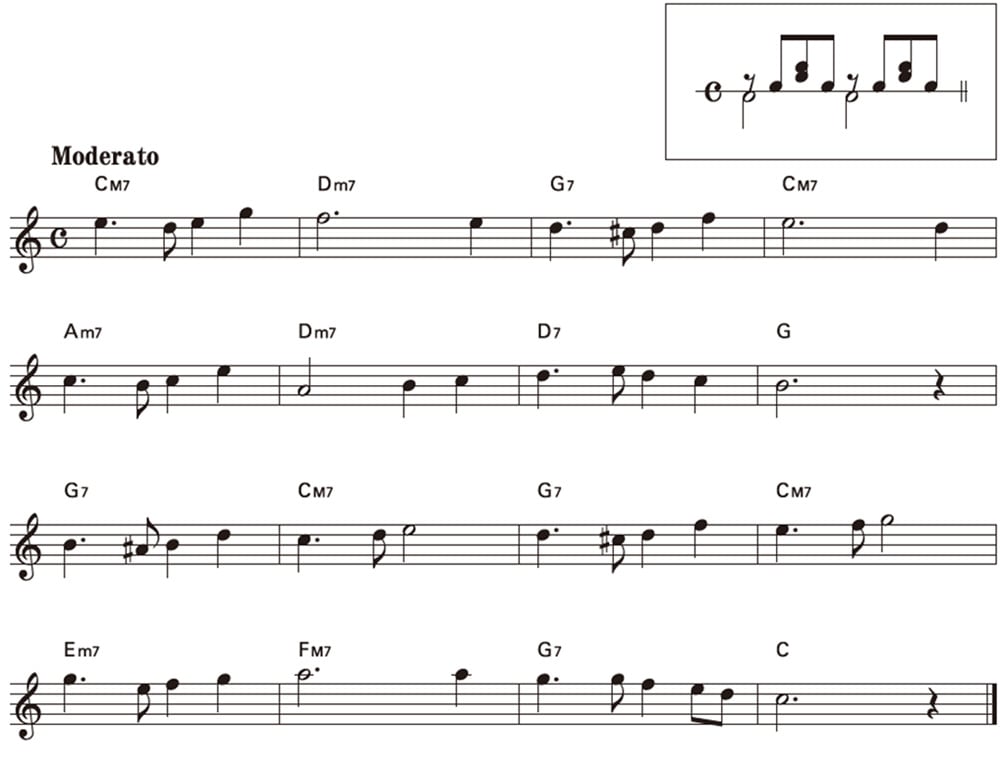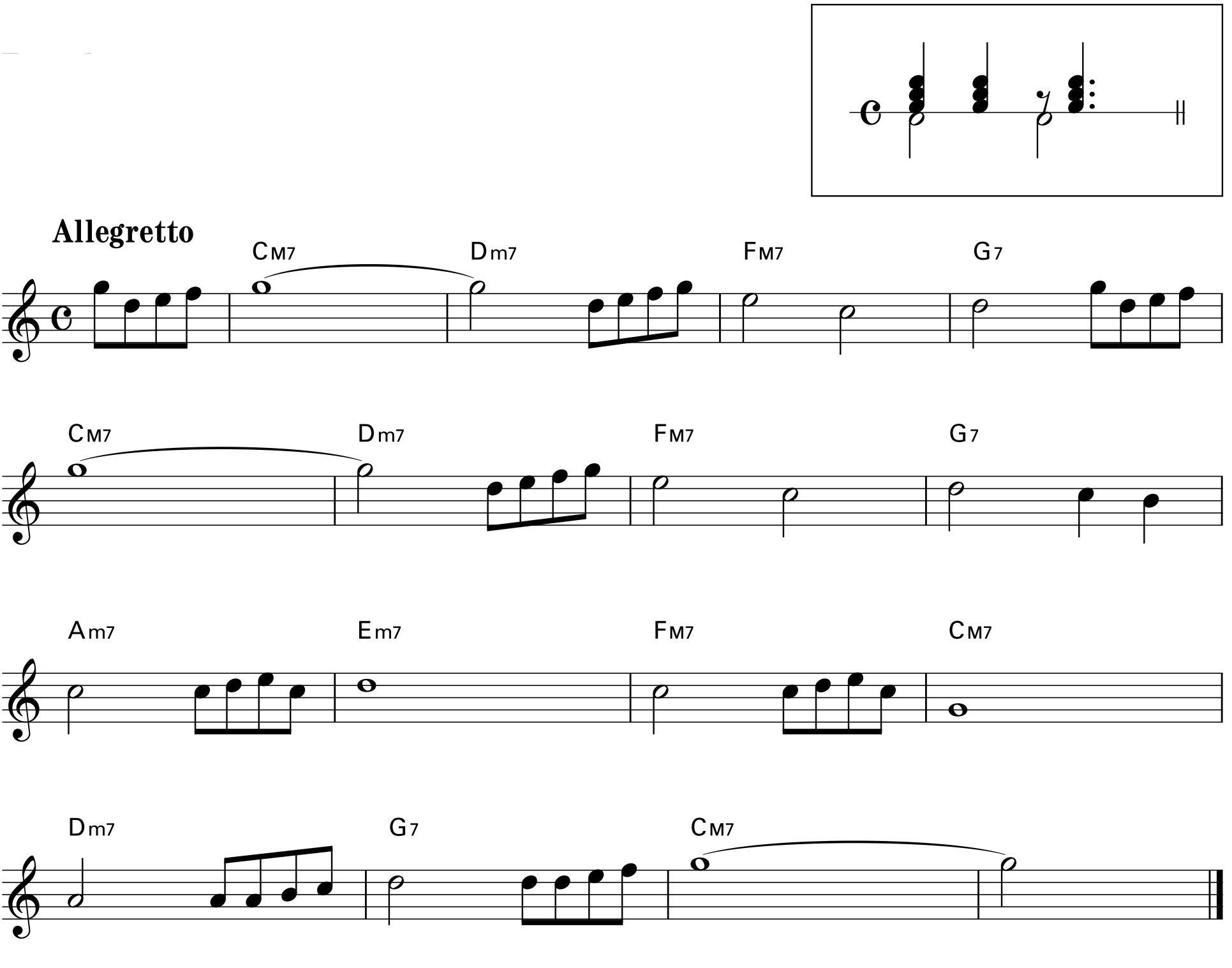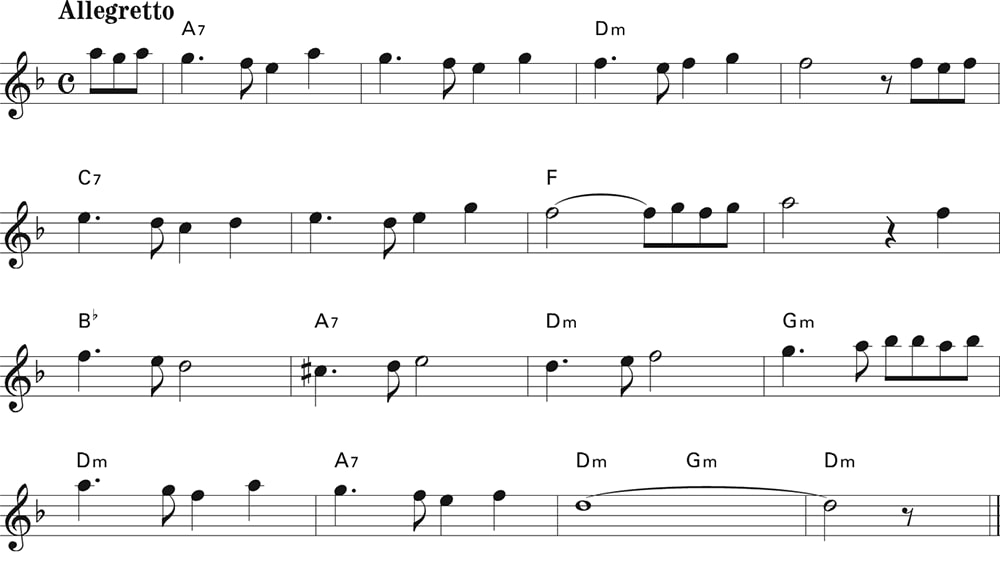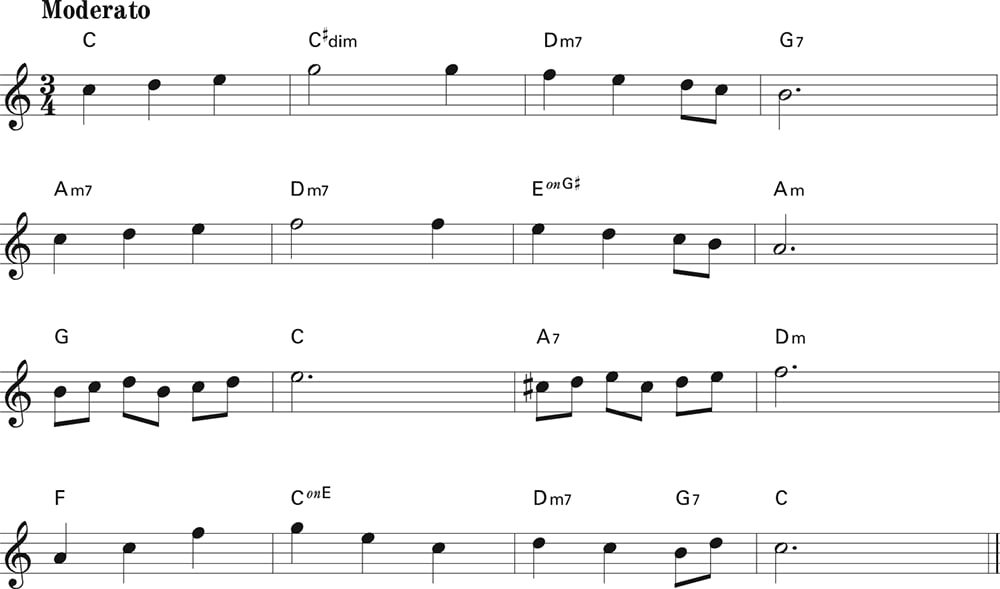Classical Guitar Grade 13-6
Examination Procedure
Grade 13, 12
Grade 11-6
Duration
Grades 13-12: 10 minutes, Grades 11-8: 15 minutes, Grades 7, 6: 20 minutes
Instrument and Equipment
Candidates are expected to bring the instrument and equipment needed for the exam.
Candidates are expected to tune their instrument to A=440Hz on their own.
If candidates have a problem with their instrument during the exam, for example, a broken string, a spare instrument prepared in the exam room may be used. Candidates are expected to solve any problems prior to the exam on their own.
A foot rest will be provided at the examination. However, candidates may bring their own foot rest or choose not to use a foot rest for the examination.
Subject Details
I. Repertoire
I-I. Compulsory Piece
Candidates prepare one compulsory piece from the Compulsory Piece List and play it.
Procedure
1. Candidate informs the examiners whether the candidate has chosen to play along with the backing track or not.
2. If the candidate chooses to play along with the backing track, examiners play the beginning of the backing track for several bars so that candidates can play along to set an appropriate volume and balance.
3. Candidate plays the piece.
- Note:
- Candidates are allowed to use the score if necessary.
- Candidates are allowed to choose whether or not they wish to play along with the backing track. The backing track files are prepared at the exam room.
- Examiners may stop the performance before it reaches the end of the piece.
Compulsory Piece List
Grade 13
Book 1 - Chapter 1: On My Way Home (Yamaha)
Grade 12
Book 1 - Chapter 2: Apple Juice (Yamaha)
Grade 11
Book 1 - Chapter 3: Down in the Valley (American Folk Song)
Book 1 - Reference Pieces: Waltz (F. Carulli)
Book 1 - Reference Pieces: Andantino (A. Cano)
Grade 10
Book 2 - Chapter 5: Home, Sweet Home (H. R. Bishop)
Book 2 - Chapter 6: Siciliano (O. Respighi)
Book 2 - Reference Pieces: Allegretto (M. Carcassi)
Grade 9
Book 3 - Chapter 8: Etude Op. 31-1 (F. Sor)
Book 3 - Chapter 9: Irish Dance (Yamaha)
Book 3 - Reference Pieces: Andante in A minor (F. Carulli)
Grade 8
Book 4 - Chapter 10: Malanguenas (Spanish Melody)
Book 4 - Chapter 11: Allegretto (N. Coste)
Book 4 - Chapter 12: Menuet (J. Krugel)
Grade 7
Book 5 - Chapter 13: Slide Waltz No. 2 (Yamaha)
Book 5 - Chapter 14: Poco Allegretto (F. Carulli)
Book 5 - Chapter 15: Capriccio (M. Carcassi)
Grade 6
Book 6 - Chapter 16: Choro Nostalgia (Yamaha)
Book 6 - Chapter 17: Waltz (M. Carcassi)
Book 6 - Chapter 18: Tremolo Study (N. Paganini)
I-II. Free Selection (Except Grades 13 and 12)
Candidates prepare one free selection piece and play it.
Points to consider when selecting a piece to prepare for Free Selection:
The level of the Free Selection piece is expected to be equivalent to the Compulsory Piece for the Grade.
Candidates may choose a Free Selection piece from the textbook or Compulsory Piece List provided that it is not the same piece they have prepared for the Compulsory Piece selection.
Procedure
1. Candidate informs the examiners whether or not they will play along with a backing track.
2. If the candidate chooses to play along with the backing track, examiners play the beginning of the backing track for several bars so that the candidate can play along to set an appropriate volume and balance.
3. Candidate plays the piece.
- Note:
- Candidates are expected to bring the scores of the pieces they have prepared to the exam.
- Examiners may ask to see the score.
- Candidates are allowed to use the score if necessary.
- Candidates are allowed to choose whether or not to play along with a backing track.
- a) If candidates choose a piece from inside the textbook, the backing track will be prepared at the exam room.
- b) If candidates choose a piece outside of the textbook and will play the piece along with a backing track, candidates are expected to bring the MP3 files or MIDI data.
- Examiners may stop the performance before it reaches the end of the piece.
II. Sight Playing
Examiners select one piece and ask the candidates to play it by sight.

Procedure
1. Candidate is presented a score of the exam piece.
2. Candidate is given 30 seconds (Grades 13-10), 60 seconds (Grades 9-6) to look at the score as preview.
3. Candidate plays the piece after the examiner’s cue.
- Note:
- Movements, such as playing without sound, fingering/stroke motion practice etc., are not allowed during preview time.
Examples
III. Accompaniment
Candidates play the accompaniment part of one piece provided, while the examiner plays the melody line.
Grades 13-8: The accompaniment pattern will be provided.
Grades 7, 6: The accompaniment pattern will not be provided, and the candidate will be expected to play an appropriate accompaniment pattern.
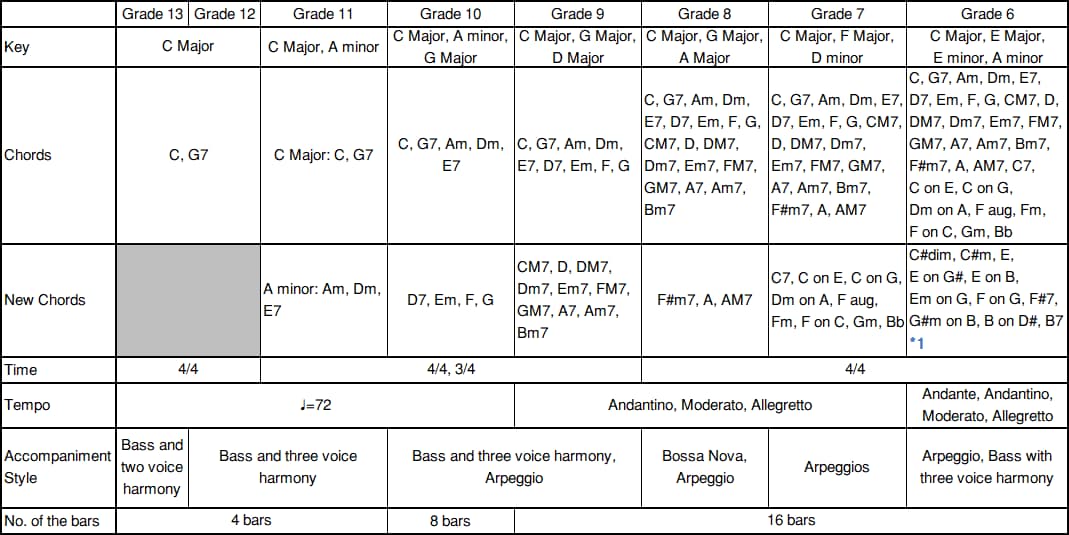
*1. The following chords are not covered in the textbook, however as Grade 6 is the highest level student Grade examination, students are expected to perform the following chords as they are commonly used in the given keys: C7 on Bb, D7 on F#, E7 on B, Em on B, Em7 on D, F on A, Fm on Ab, G sus4, B
Procedure
1. Candidate is presented a score for which they are expected to play an accompaniment.
2. Candidate is given 30 seconds (Grades 13-10), 60 seconds (Grades 9-6) to look at the score as preview.
3. Candidate is given the appropriate tempo by the examiner.
4. Candidate plays the accompaniment of the piece after the examiner’s cue.
- Note:
- Movements, such as playing without sound, fingering/stroke motion practice etc., are not allowed during preview time.
Examples
IV. Scale (Except Grades 13 and 12)
Candidates play one scale selected by the examiners without the use of a score.
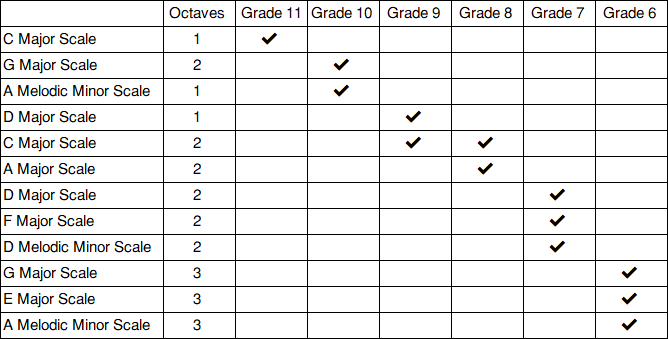
Procedure
1. Examiners give candidate information on the type, key, range and starting note of the scale to be played.
2. Candidate plays the scale as required.
- Note:
- Candidates are not allowed to use scores during the exam.
- The last note of ascending/descending may be played longer than the other notes
- The tempo noted in the score is the suggested tempo. However, the ability to play at a steady tempo is what is being evaluated.
- For Grades 13 and 12, examiners evaluate the candidates’ “Willingness” toward examination.






